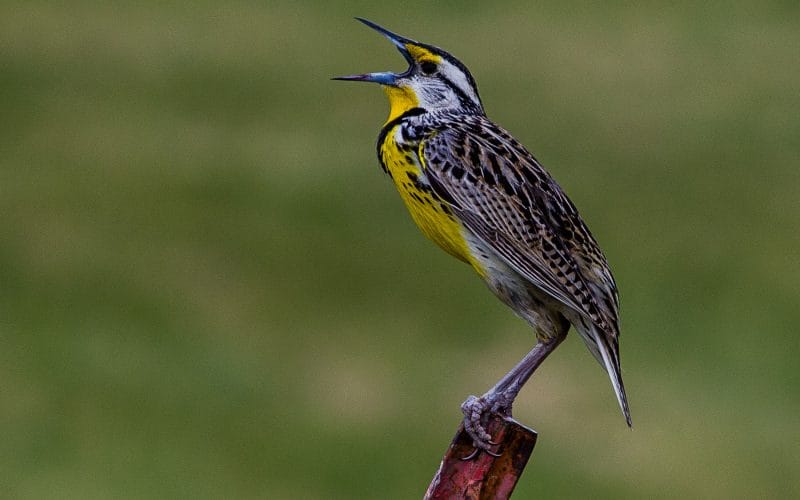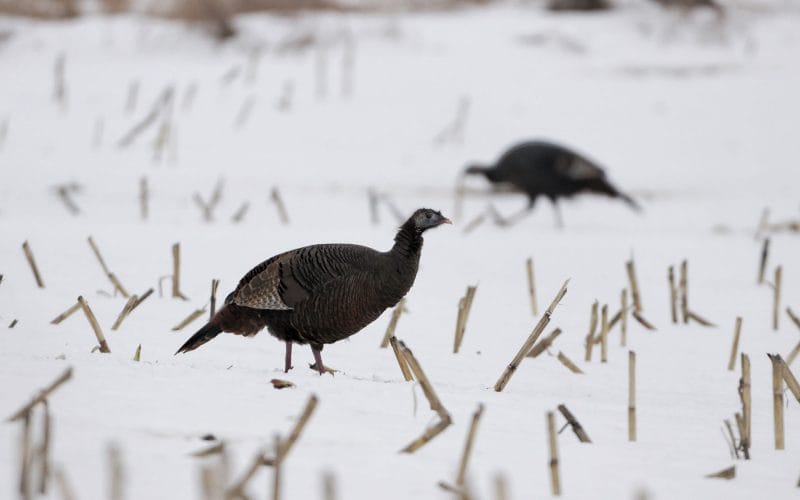Birding requires sitting or standing still for long hours, nearly doing nothing. Patience is your friend here, and to help make your time more tolerable, you need the right gear packed in the right field bag. So how do you pick out field bags for birding?
Like any outdoor sport -yes, birders believe birding is a sport-, birding requires gear. At the very least, you need a good pair of binoculars, a decent field guide, and something to record your observations with. Otherwise, you’re just taking a walk!
Some birders take packing seriously with heavy backpacks and full gear, while others go as light as a feather with their binoculars and field guides only.
“What should I do?” You ask. We’ll answer you in this article.
Types of Birding Field Bags
Your field bag and the gear you pack while birding can determine your trip’s quality. That’s why we’ll be helping you choose the best field bag for birding that suits your needs. This is where you should start when picking out field bags for birding.
We’re looking for a bag with convenient size -depending on your needs and the length of the trip- and durable material, preferably weather resistant.
Here are the types of field bags to choose from that are the best field bags for birding.
Backpacks
The most convenient and popular option for birders is backpacks, for they store the most gear and it’s convenient to carry.
We’re looking for materials that are tear-resistant, like nylon, for example, to keep up with your adventures. Besides, it’d be a clever choice because of its versatility; you can use a good-looking backpack to go anywhere.
Author Note: Hiking backpacks would be convenient for you because they’re designed to withstand tough weather conditions. Plus, they hold plenty of stuff while distributing the weight well over your body, so you don’t feel it pressuring your body.
We Recommend: Venture Pal 40L Lightweight Packable Travel Hiking Backpack Daypack

Venture Pal’s backpack is perfect for outdoor activities, where it’s made of high-quality nylon fabric that’s resistant to wear and tear. It has a huge capacity of 40 liters, but carrying it won’t feel that way, thanks to the smart weight distributing system. The shoulder straps are made of breathable mesh to allow for proper airflow, and they’re padded so as not to stress your shoulders while you’re carrying it.
The backpack is designed with convenience in mind. There’s a waterproof wet pocket in the main compartment so you can store your sensitive devices. Moreover, it has side pockets in which you should store items you need within arm’s reach. This backpack is great for holding your binoculars as well.
While backpacks are perfect for long birding trips, they’re not for everybody. They might be more than what you need in many cases. There are better options in these situations.
Lumbar Bags
A lumbar bag is like a waist bag but the other way round. It sits low on your back, and you can swing it forward when you need to grab something from it and move it back there afterward.
Lumbar bags are way lighter and smaller than backpacks, which is why many birders prefer them when they don’t have much to carry.
We Recommend: Bp Vision Outdoor 2 Water Bottle Holder Lumbar Pack

This is as much as it gets when we’re talking about convenience and practicality in field bags. Bp Vision’s outdoor lumbar pack is compact but super organized. It has one big main compartment with three front zippers to keep things separated, dual bottle holders, and two exterior side pockets with zippers for extra storage.
As we’ve said, this isn’t the bag for fancy packers, but it’ll pack your necessities like a pro.
Bp Vision’s lumbar pack is versatile. You can wear it on your back, your waist, or crossbody. It comes with two shoulder straps of breathable mesh and an externally adjustable belt.
Birders who prefer lumbar bags usually have their binoculars and cameras hanging on their necks with straps, and they leave the rest of their stuff in the bag, which allows them to move freely.
Shoulder/ Crossbody Bags
You can even go lighter with binoculars and a small bag on a short birding trip. A crossbody or shoulder bag might do to some. We prefer crossbody bags, though, because you can move freely while carrying them, unlike shoulder bags and tote bags that might hinder your movement.
What Should You Pack in Your Field Bag for Birding?
Unlike other recreational activities, birdwatching is pretty straightforward and minimalistic when it comes to gear. Yet, there are some essentials you need to pack that’ll make your birding trip easier. We’re listing them below.
Binoculars – A Must
Starting with the basics, you should pack your binoculars first. Choosing the right binoculars is essential to get the most out of your birding experience.
Author Note: If you’re experienced, you know how choosing the right pair of binoculars can make or break your birding trip. If you’re a novice, let us tell you that your naked eye won’t suffice for bird watching. You do need the magnification powers of binoculars.
The main appeal of binoculars is that they’re lightweight and portable, unlike other options that are a hassle for you to carry and use, like telescopes for example.
Field Guide – A Must
You can’t go on birding without a field guide, digital or paper copy. You need one to get to know what birds to expect, in addition to how and where to find them.
In the simplest terms, a field guide is an illustrated reference for birds in a certain area, region, or country. You can get a local field guide or a general one, depending on your needs.
Yet, we recommend you go with a field guide that covers a big range because as you get more interested and invested in birding, you’ll find yourself expanding your expeditions covering more terrain. For that reason, having one field guide that covers it all is easier and more economical than buying multiple ones depending on the area.
At the same time, you need to consider the physical size of the field guide. You need it to be compact—ideally, to fit into your pocket so as not to hinder your movement. Then, you can catch up with the information you need to know when you’re back home. As long as you’re able to identify the bird, you’re good.
Notebook & Pen – A Must

It goes without saying that you need something to record your observations and findings, and what’s better than an old-fashioned notebook and a pen?
Sure, you can use your mobile phone to take notes. However, you might be using it for a bunch of other stuff like taking photos or searching the internet for some info about the birds. So, using it to take notes too won’t be the smartest option.
A small, waterproof notebook would be perfect for your birding trip. There are ones with specific prompts for birders, if you’re a fan of stationery or a birding nerd, you’ll love them!
Identification – A Must
A lot of newbies fall for this one, that they forget to bring any IDs along with them, which might put them in problems afterward. You should carry proper identification especially if you’re birdwatching in some restricted areas or parks.
Author Note: Keep in mind that you must show some type of identification if you’re photographing in certain areas, which you’ll probably be doing, so always make sure you have an ID.
Alternative Clothing Piece – Recommended

Weather changes might happen while you’re outdoors, and you should be prepared. Besides, you don’t want to end up with wet or sweaty clothes. Some places get cold at night, so you need to prepare for that, as well.
Having an extra clothing piece would put you on the safe side in case you encounter any unexpected situations like rain, for example. You can get a bug-proof hoodie or a base shirt with a good venting system and/or thermal insulation. A waterproof hiking jacket might help in winter.
Better safe than sorry!
Cooler – Optional

Since you’ll be out in humid weather for a relatively long time, having a cooler to preserve your food and give you some cold water would be an incredible asset.
A portable cooler would keep your food fresh and dry, and it’d be nice to have on a long trip.
Accessories
You can pick from these items according to your needs. They’re not absolute necessities, but they’re helpful.
- Sunscreen
- Water bottle
- Camera
- Sunglasses
- Insect repellent
- Map
- Basic first aid kit
- Bird Checklist
- Hat
- Torch
Conclusion
There’s no ‘bag’ fits all when it comes to birding. It differs from one person to another and you don’t have to carry stuff you don’t need because somebody said so. Assess your situation and research the area you’ll be birding in as much as you can, then choose your field bag and gear accordingly.
One last piece of advice is that you should never leave your optics in your checked-in luggage. They might get broken, scratched, or -god forbid- lost. It’s better to keep them with you in your carry-on luggage. We hope you enjoyed this article on the best field bags for birding.
Happy birding! We hope you see some magnificent birds.
Fly high friends!
FAQ
No, you can start with a pair of binoculars and a cup of coffee in your backyard. You need more gear so that you are safe out hiking and so that you don’t miss any birds and can keep a record of your sightings.
For me it is my camera. I use it in place of binoculars and to record my sightings (even if I delete the photo later). Most people carry a smartphone at all times anyway and that can be used to look up birds on an app and record sightings as well.










